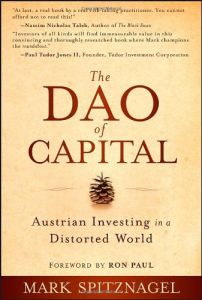
Read or listen offline
Amazon KindleRecommendation
Mark Spitznagel made a fortune while others lost money during the 2008 global financial crisis. Now he generously shares a large slice of his investment wisdom. He says he didn’t base his investment position leading up to 2008 on hunches or contrarian obstinacy, but rather on the principles of Austrian economics, as well as on decades of observing irrational investor psychology. His ideas about how to gauge the dangers of distortion in the US capital markets are intriguing, as are his explanations of why the Austrian school of economics esteems long-term capital investments. Spitznagel, who has an appealing way with words, uses examples of military strategy, forest ecosystems and ancient Asian teachings to convey his mental framework for viewing the markets. While never giving investment advice, getAbstract recommends this philosophical journey, filled with valuable, ethically solid and economics-based thinking, to both novice and professional investors.
Summary
About the Author
Mark Spitznagel is the founder and president of Universa Investments, a hedge fund.
















Comment on this summary